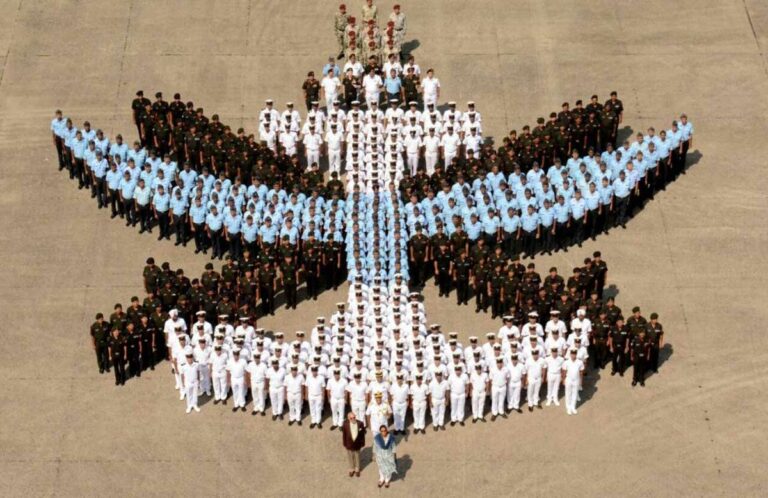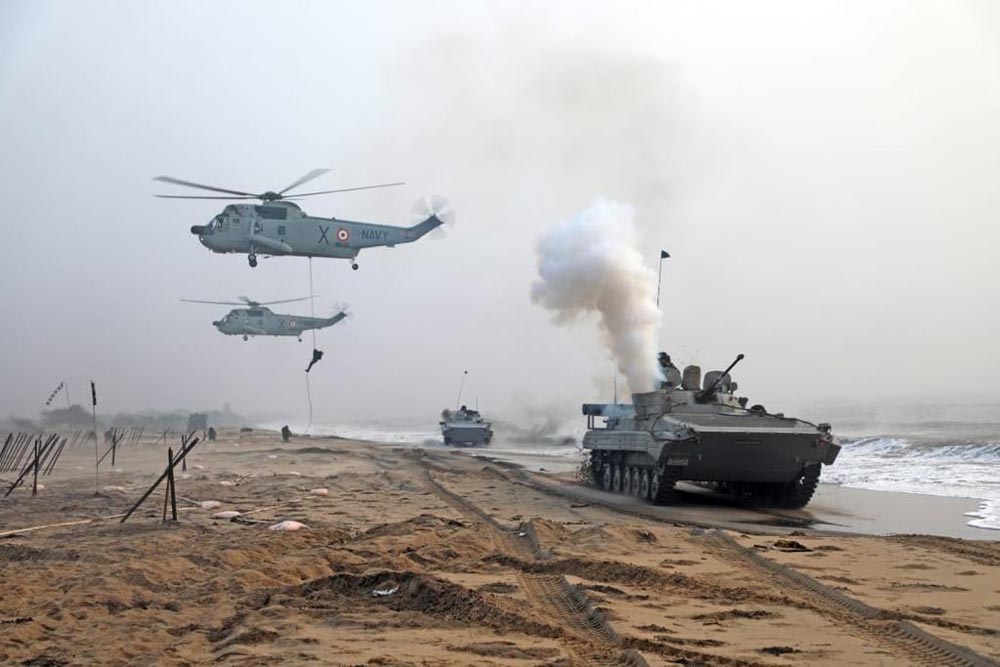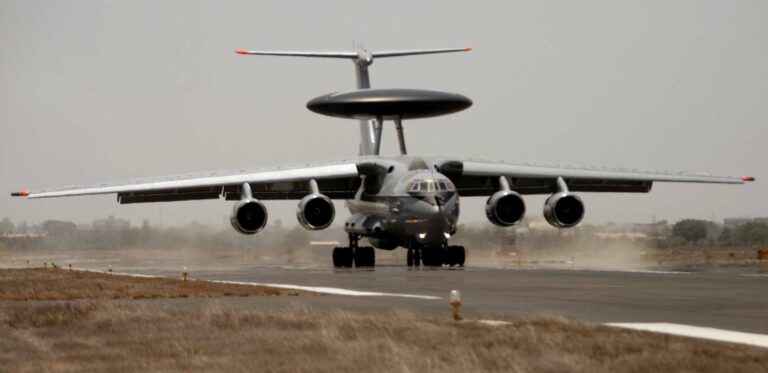
On March 15, 2023, the Minister of State (MoS) for Defence, Ajay Bhat, introduced the Inter-Services Organizations (Command, Control and Discipline) Bill, 2023, in Lok Sabha; for empowering the commander-in-chief, officer-in-command or any other officer heading a tri-services organization to take disciplinary and administrative action against personnel under them who are currently governed by respective service laws; Army Act 1950, Air Force Act 1950 and Navy Act, 1957.
Tri-service organizations are not new in the country. Both HQ Integrated Defence Staff (IDS) and Andaman & Nicobar Command (ANC) were established in 2001, followed by Strategic Forces Command (SFC) in 2003. Recent additions are the Armed Forces Special Operations Division (AFSOD) and Defence Cyber Agency in 2018 and Defence Space Agency in 2019. The Air Force has reservations against an Integrated Air Defence Command.
Tri-Service training establishments include the Defence Services Staff College (DSSC), National Defence College (NDC), College of Defence Management (CDM) and Army Institute of Technology (AIT) established in 1905, 1960, 1970 and 1994 respectively. Headquarters of the three Services also have officers posted from the other two services for the past several years.

Institutionalizing command and control in tri-service organizations is good but have heads of the tri-service organizations/training establishments not being exercising effective command and control over personnel of other services serving under them over the last 118 years (DSSC established in 1905) and if so, how many such cases have happened?
The hoopla about the Bill is more to project this would give renewed push to theaterization appears more to divert attention from non-implementation of OROP and ill-conceived and badly executed schemes like ‘Agnipath’ and SPARSH, latter to expand the PCDA empire.
But before addressing theaterization, why in tri-service organizations, or for that matter the three services, the ACR forms are not standardized and the point system different? Why no thought has been given to standardize the Army Act 1950, Air Force Act 1950, and Navy Act 1957 into one ‘Defence Services Act’; especially when the Ministry of Defence (MoD) employs a battery of lawyers to drag defence veterans and widows into litigation for their dues, and number of veterans have died while awaiting OROP arrears.
The CDS and theaterization needs to be viewed in the following backdrop:
- The Defence Secretary is officially charged with Defence of India (not the Defence Minister) as in British India. Insertions in the media say this is not the case but no government has shown the spunk to publish the tasks of the Defence Minister to include defence of India. .
- The bureaucracy ensured a “toothless” CDS with the CCS note of November 23, 2001 reading, “As and when the CDS is appointed, he will have equal voting rights as Service Chiefs and in case two Service Chiefs disagree, MoD (read bureaucrats) will arbitrate.” Imagine two Army Commanders./equivalent cocking a snook at their Service Chief?
- HQ IDS was to merge with MoD but the then Defence Minister George Fernandes was falsely implicated in “Coffingate” knowing he would voluntarily step down till the inquiry was completed – he was absolved of all charges years later.
- The CDS is also Secretary, Department of Military Affairs (DMA) and in working relationship “junior” to the Defence Secretary, heading the Department of Defence (DoD).
- CDS has no say in capital acquisitions and defence policy (in no-war-no-peace and war) remains with defence secretary;
- CDS should be a single-point military advisor to the Prime Minister but became advisor to the Defence Minister, to whom Service Chiefs also have direct access.
- After keeping the post of CDS vacant for nine months, a veteran three-star officer was appointed as the second CDS; indicating that none of the serving three-star officers/equivalent of the three-services were fit to become CDS.
- India’s NSA has always been non-military; the present incumbent being the only police officer in the world to hold the post but is unable to define a national security strategy for which he was tasked four years back in 2019.
- Both the current CDS and the Advisor to Defence Minister have worked under the present NSA; groomed more in political ideology than national security as one post on social media says. Now selection to Corps Commander/Equivalent is also to be through ‘deep selection’, implying ‘pliability’ would be the top criteria.
- Government has yet to clarify who the Theatre Commanders report to – CDS, Defence Secretary in-charge of defence policy, Defence Minister or the NSA?
There is no escaping the military logic of creating suitably constituted Integrated Theatre Commands and Integrated Functional Commands for the Armed Forces as a whole. These discussions have been ongoing since aftermath of the Kargil Conflict in 1999. On July 24, 2022, Defence Minister Rajnath Singh addressing a public function at Jammu said, “Keeping in view (joint operations as seen in Operation Vijay in Kargil), we have decided to set up joint theatre commands”. RSS General Secretary Dattatreya Hosabale also addressed the gathering.
24 years after the Kargil Conflict, do we have a clear blueprint for theaterizaton or are we simply aping theaterization of China’s PLA and in that too missing vital advantages in their system? For example, China’s Strategic Support Force that combines the functions of intelligence, technical reconnaissance, electronic warfare, cyber warfare and space warfare has tremendous advantages, whereas, we keep looking at separate entities.
The China threat is expanding very fast and the US-NATO would love an India-China war for extracting strategic and financial benefits. The Chief of Naval Staff, Admiral R Hari Kumar recently said that China has inducted 148 warships in the last 10 years, which is “perhaps the entire Indian Navy size”. The first CDS had created a faux pas by publicly calling the Air Force a “support force”. Now the Chief of the Air Staff, Air Chief Marshal VR Chaudhari has said, “Each service has a doctrine. The doctrinal aspects of the IAF should not be compromised in any way by the new structures.”
Discussion about the IAF role generally veers around the primacy of the IAF supporting ground forces or otherwise. But the predicament of the IAF is that it is down to just 31 fighter squadrons (roughly 18 aircraft per squadron) against an operational requirement of 42 squadrons and this dilemma would increase each year as more combat aircraft retire. There are estimates that over the next decade, IAFs fighter squadron strength would remain at 35 or so.
A future war would not only involve dealing with two-fronts but also an activated Indian Ocean where IAF would need to support naval operations. This is in stark contrast to one single theatre command responsible for operations at sea. Hence, the IAF’s reservations over splitting of resources must be acknowledged, wargamed and solutions found.
The military is kept out of strategic security formulations in India, the only exception was in 1971 when the then Chief of Army Staff, General (later Field Marshal) Sam Manekshaw was one-to-one with the then Prime Minister; much to the consternation of the bureaucrats.
The bane of India is the bureaucracy holding politicians to ransom because politicians are ‘dependent’ on them. This equation has remained constant over the decades. The present government made a half-hearted attempt through lateral induction of joint secretaries (none in MoD) but placed them under IAS additional and IAS secretaries (obviously on bureaucratic advice), which killed the concept. Apparently, the policy makers then decided to join the bureaucracy and reap the political and financial advantage. Let us cut the crap that India has become corruption free.
Finally, the danger is that theaterization could be hurriedly thrust down without detailed thought in run up to or concurrent to the upcoming general elections by the polity-assisted wily bureaucracy headed by the Defence Secretary in-charge of defence policy, adverse fallouts of which would be difficult to reverse. Moreover, theaterization of the 17 service commands would entail huge expenditure. Where is this money going to come from? Expected inflation will neutralize the capital increase in Defence Budget 2023-2024; which gives “no” push modernization plans of the military.
The author is an Indian Army veteran. Views expressed are personal.
The post New Bill Assisting Theaterization? appeared first on N4M (News4masses).
from
https://news4masses.com/new-bill-assisting-theaterization/

No comments:
Post a Comment